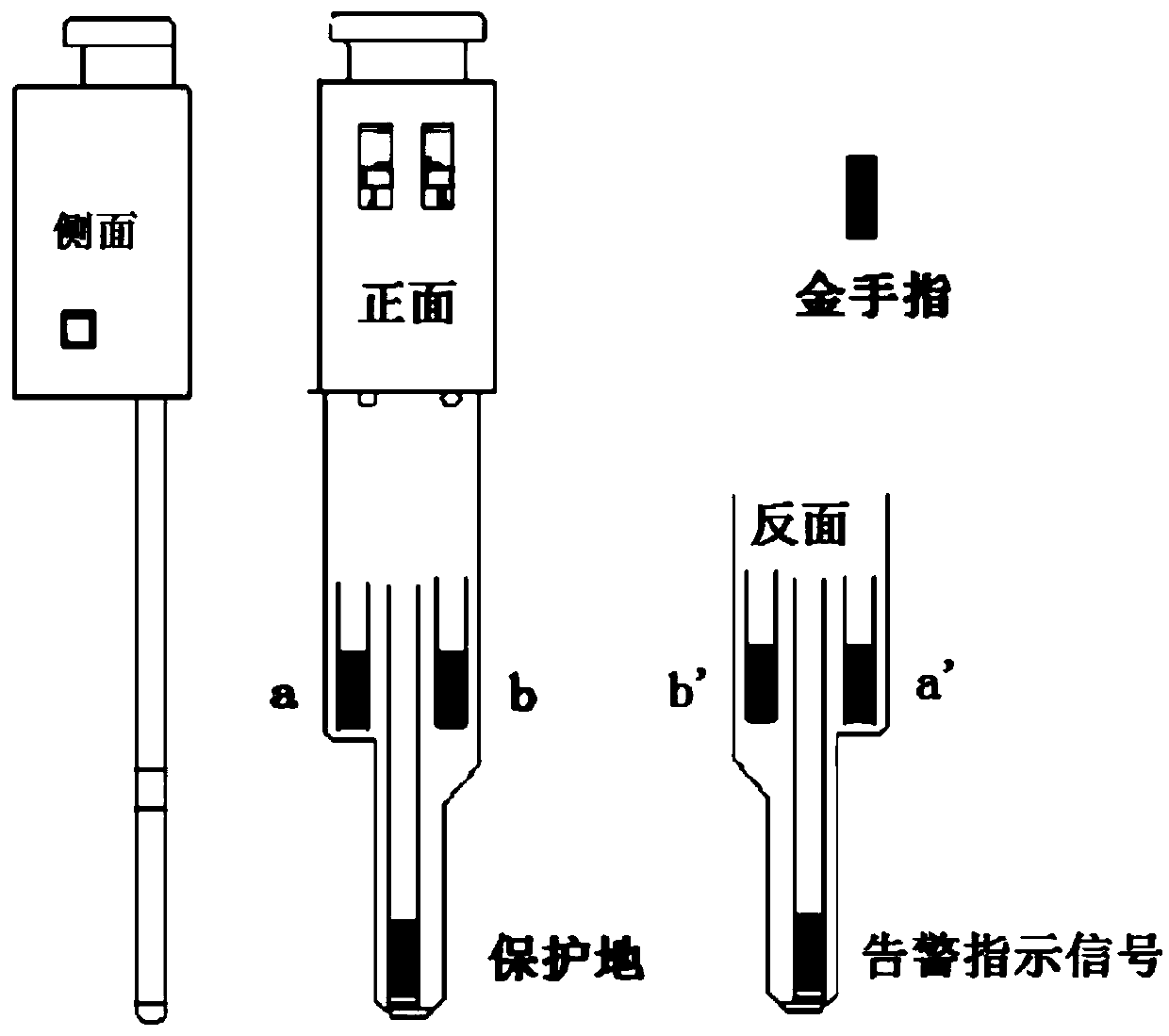Main distribution frame line bank, safety unit and main distribution frame
A technology of general distribution frame and security unit, applied in electrical components, emergency protection circuit devices, emergency protection devices with automatic disconnection, etc., can solve problems such as increased crosstalk, aggravated crosstalk coupling difference of port 1, and increased crosstalk, etc. To achieve the effect of reducing crosstalk
- Summary
- Abstract
- Description
- Claims
- Application Information
AI Technical Summary
Problems solved by technology
Method used
Image
Examples
application example 1
[0073] This application example provides an MDF terminal block, which is suitable for internal modules that do not require overcurrent and overvoltage protection. The circuit diagram of this embodiment is as Figure 6b As shown, the wiring diagram is as Figure 9 As shown, the first metal protective wire is set on the terminal block of the main distribution frame, and the first protective metal unit, the second protective metal unit, the third protective metal unit, and the fourth protective metal unit are set in the terminal block , the first metal protection wire is electrically connected to the first protection metal unit and the second protection metal unit by crimping or plugging. The first protective metal unit, the second protective metal unit, the third protective metal unit, and the fourth protective metal unit are realized by metal reeds, which are called protective metal reeds.
[0074] Specifically, the thin metal wire extending on the first metal protection wire...
application example 2
[0076] This application example provides an MDF terminal block, and this embodiment is suitable for an outside line module that has a security unit but does not require an alarm indication. The circuit diagram of this embodiment is as Figure 6b As shown, wiring as Figure 10 As shown, the metal protective wire (namely the first metal protective wire) is installed on the terminal block housing, and the upper extended thin metal wire is connected to the protective metal reed in the terminal block by crimping or plugging. The first protective metal unit, the second protective metal unit, the third protective metal unit, and the fourth protective metal unit are realized by metal reeds, which are called protective metal reeds. The protective metal reed adopts the same shape as the metal reed used in the internal line interface and the external line interface. The protective metal reed has a crimping groove (or socket) and a contact, and the contact is in a normally closed state....
application example 3
[0078] This application example provides an MDF terminal block, and this embodiment is suitable for an outside line module that requires an alarm indication. The circuit diagram of this embodiment is as Figure 7a shown. In this embodiment, the first metal protection wire is arranged on one side of the terminal block casing, the second metal protection wire is arranged on the other side of the connection row casing, and the first metal protection wire is connected by crimping or The first protective metal unit and the second protective metal unit are electrically connected by plugging, and the second metal protective wire is electrically connected to the third protective metal unit and the fourth protective metal unit by crimping or plugging . In this embodiment, the first metal protection line is also called a protection ground metal protection line, and the second metal protection line is also called an alarm indication metal protection line.
[0079] Such as Figure 11 ...
PUM
 Login to View More
Login to View More Abstract
Description
Claims
Application Information
 Login to View More
Login to View More - R&D
- Intellectual Property
- Life Sciences
- Materials
- Tech Scout
- Unparalleled Data Quality
- Higher Quality Content
- 60% Fewer Hallucinations
Browse by: Latest US Patents, China's latest patents, Technical Efficacy Thesaurus, Application Domain, Technology Topic, Popular Technical Reports.
© 2025 PatSnap. All rights reserved.Legal|Privacy policy|Modern Slavery Act Transparency Statement|Sitemap|About US| Contact US: help@patsnap.com



